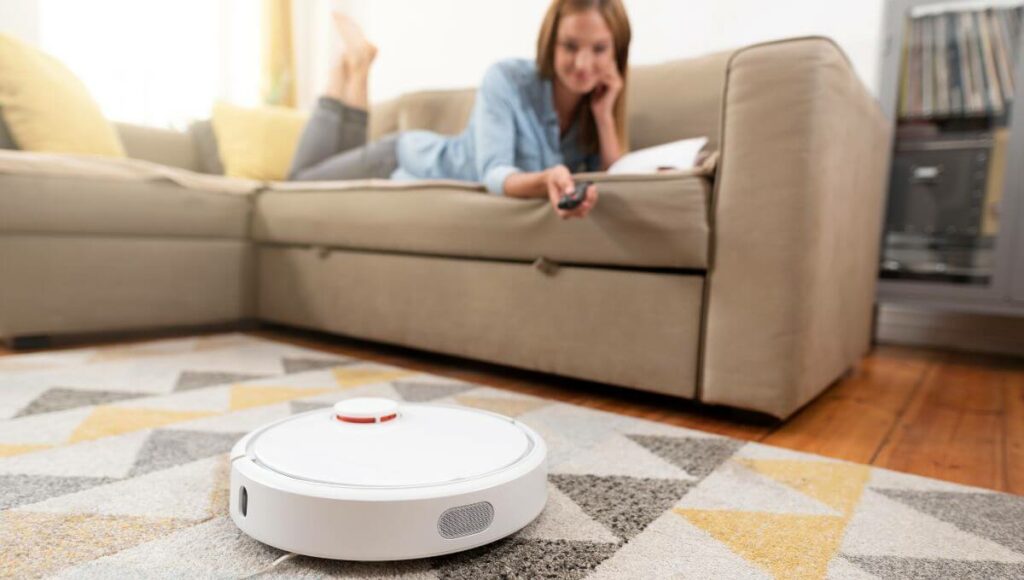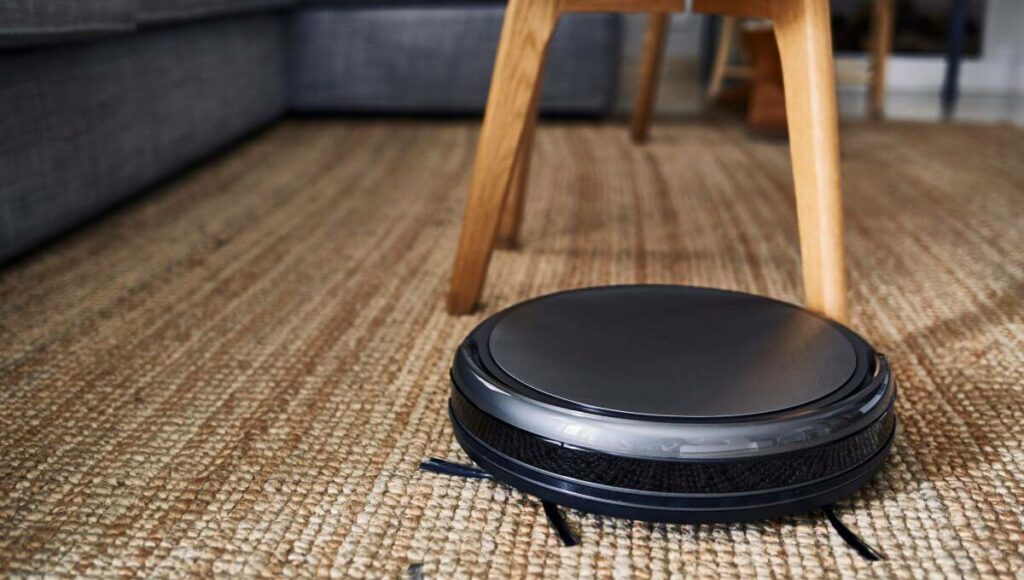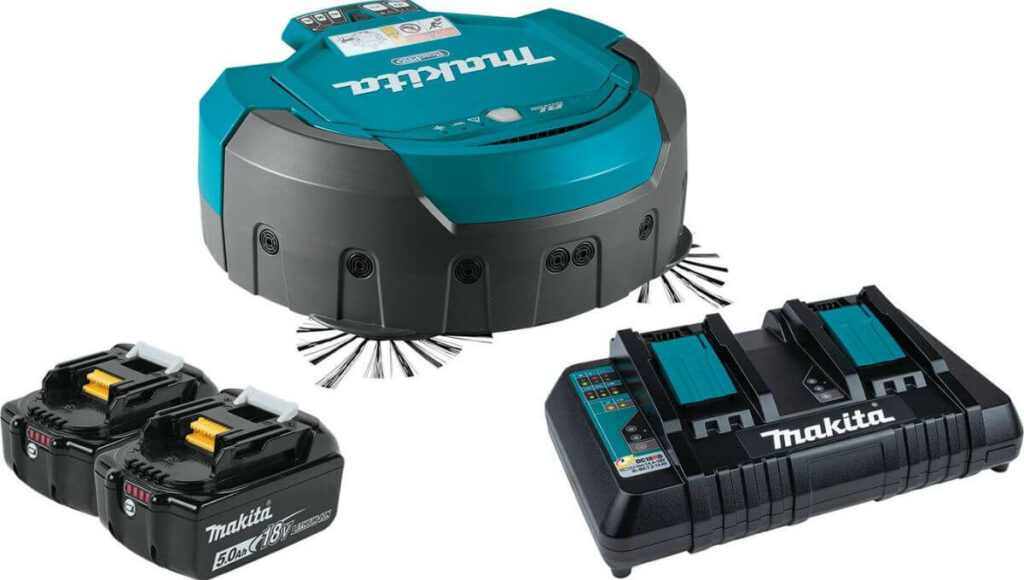Robot vacuum cleaners have become increasingly popular in recent years, and for good reason. They are efficient, convenient, and can save time and effort when cleaning. But are they a good fit for commercial establishments? With their advanced sensors, specialized brushes, and robust sanitation mechanisms, robotic vacuum cleaners have proven to be excellent navigators and cleaners of large spills and debris on floors. This makes them a valuable addition to many commercial establishments’ cleaning routines.
One of the key benefits of using robot vacuums in commercial properties is the time and effort they can save. Taking care of basic cleaning jobs allows employees to focus on other important tasks and frees maintenance workers to tackle more complicated cleaning tasks. Additionally, some commercial robot vacuums have advanced AI that can track key metrics and provide data on where and how floors were vacuumed. This data can help identify challenges or bottlenecks that reduce operational efficiency and pinpoint specific opportunities to optimize operations.
[lwptoc]
The emergence of robot vacuums in commercial cleaning

In the modern business world, robot vacuums have become prominent, especially in commercial spaces, due to their ability to handle large areas efficiently. Notably, these machines leverage cutting-edge technology, including multiple detection sensors, to seamlessly navigate obstacles and thoroughly clean floors. Whether it’s carpets or other floor types laden with debris, the power of robot vacuums with their specially designed brushes stands out.
The robot vacuum’s robust performance in commercial use is undeniable, from delivering spotless cleaning tasks to reducing labor costs. The commercial sector is increasingly adopting these vacuums thanks to their automated capabilities. The focus of these devices isn’t merely on picking up debris but ensuring a comprehensive clean that is challenging to achieve manually.
Ultimately, the rise of robots in commercial cleaning signals a paradigm shift driven by cost savings, efficiency, and the ability to cover extensive commercial properties. It’s not just about vacuuming anymore, but a new approach to maintaining cleanliness in commercial environments.
Benefits of robot vacuums in commercial properties
Robot vacuum cleaners have become increasingly popular in recent years and for good reason. These devices offer numerous benefits for commercial properties, including increased productivity, cost savings and convenience.
Productivity
Increased productivity is one of the most significant benefits of using robot vacuums in commercial properties. With these devices, cleaning tasks can be completed faster and more efficiently, allowing employees to focus on other essential tasks. The robotic vacuum can be programmed to clean at specific times but not spot clean, ensuring that floors are always clean without constant supervision.
Additionally, robot vacuums are designed to navigate around obstacles and clean hard-to-reach areas, such as under furniture and around corners. This means that cleaning tasks can be completed more thoroughly, reducing the need for additional cleaning services.
Convenience
Another benefit of using robotic vacuums in commercial properties is their convenience. With these devices, cleaning tasks can be completed automatically without human intervention. This means that employees can focus on other tasks while the robot vacuum cleaner cleans.
Robot vacuums are also designed to be easy to use. They can be programmed to clean at specific times and are easily controlled using a smartphone app. Additionally, these robots are designed to be easy to maintain, with replaceable parts and easy-to-clean filters.
In conclusion, these robots offer numerous benefits for commercial properties. They increase productivity by allowing cleaning tasks to be completed faster and more efficiently and offer convenience by automating the cleaning process. Robot vacuums are a valuable addition to any commercial property with their advanced features and easy-to-use design.
Features of commercial robot vacuums

When choosing a commercial robot vacuum, there are several features to consider. Below are some of the most essential components to keep in mind.
Sensors
Commercial robot vacuums are equipped with various sensors that allow them to navigate obstacles and avoid collisions. Some models even have sensors that detect when they are about to fall down stairs or off ledges.
Navigation
Navigation is another essential feature to consider. Most commercial robot vacuums use a combination of sensors and mapping technology to navigate around a space. This allows them to clean efficiently and effectively without damaging walls or furniture.
Mapping
Mapping technology is essential to a commercial robot vacuum’s navigation system. Some models of these robots can create maps of the various floor spaces they are cleaning, which allows them to clean more efficiently over time.
Suction power
Suction power is an important consideration when choosing a suitable commercial robot vacuum. Look for a model with strong suction power to ensure it can pick up debris, dust and dirt effectively.
Battery life
Battery life is another essential factor to consider. Look for a model with long battery life to ensure it can clean for an extended period without recharging the batteries.
Maintenance
Maintenance is an important consideration when choosing a commercial robot vacuum. Look for a model that is easy to maintain and clean to ensure that it can continue to function effectively over time.
HEPA filters
HEPA filters are essential to consider if you want to ensure that your commercial space is as clean and healthy as possible. Look for a model with a HEPA filter to ensure that it can capture even the smallest particles of dust and debris.
Self-emptying base
Some commercial robot vacuums have a self-emptying base, allowing them to empty their dustbins automatically. This can be a convenient feature, especially if the company, business or establishment uses the robot vacuum to clean an ample commercial space.
In conclusion, when choosing a commercial robot vacuum, it is important to consider various factors, including sensors, navigation, mapping, suction power, battery life, maintenance, HEPA filters, and self-emptying bases. By choosing a model with the right combination of features, you can ensure that your commercial space stays clean and healthy with minimal effort.
Types of commercial robot vacuums
When it comes to commercial robot vacuums, there are generally two types: entry-level and high-end. Each type has its own set of features and benefits.
Entry-level
Entry-level robot vacuum systems are typically less expensive and have fewer features than their high-end counterparts. These robotic vacuums are often used in smaller commercial spaces, such as small offices or retail stores.
One of the main benefits of entry-level robot vacuums is their affordability. They are an excellent option for businesses trying out a robot vacuum without investing much money upfront. Additionally, entry-level robot vacuums are often easy to use and require minimal setup.
However, entry-level robot vacuums may have a different cleaning ability and power level than high-end models. They may also have shorter battery life and may not be able to navigate complex environments as well.
High-end
High-end robot vacuums are typically more expensive and have more advanced features than entry-level models. These expensive robot vacuums are often used in larger commercial spaces, such as warehouses or large retail stores.
One of the main benefits of high-end robot vacuums is their cleaning power. They are often able to clean more thoroughly and efficiently than entry-level models. Additionally, high-end robot vacuums may have longer battery life and can navigate complex environments more efficiently.
However, high-end robot vacuums can be expensive and require more setup and maintenance than entry-level models. They may also be more complex to use, which could require additional training for janitorial staff.
Overall, the type of commercial robot vacuum that is best for a business will depend on various factors, including the size of the space, the cleaning needs, and the budget of the robotic vacuum.
Best commercial robot vacuums
Robot vacuums can be a game-changer when it comes to commercial cleaning of properties. They can save time, reduce labor costs, and minimize the need for additional cleaners. This section will look at some of the best commercial robot vacuums available.
Makita DRC200PT

Makita DRC200PT is a powerful and efficient commercial robotic vacuum that quickly cleans large areas. It has a runtime of up to 200 minutes and can cover up to 5,380 square feet on a single charge. The robot vacuum cleaners also have a HEPA filter that captures 99.97% of particles as small as 0.3 microns.
Here are some key features of Makita DRC200PT:
- Two main brush rollers for efficient cleaning
- Four-stage cleaning system
- Quiet operation
- Large dustbin capacity
Roborock S7 MaxV Ultra
Roborock S7 MaxV Ultra is a versatile robot vacuum used in residential and commercial settings. It uses advanced LIDAR navigation technology to map rooms precisely and easily avoid obstacles. The vacuum has a runtime of up to 180 minutes and can cover up to 3,000 square feet on a single charge.
Here are some key features of the Roborock S7 MaxV Ultra:
- Multi-floor mapping
- Carpet detection and automatic suction adjustment
- Automatic mop lifting
- Voice control through Alexa or Google Assistant
SoftBank Robotics Whiz
SoftBank Robotics Whiz is a commercial robot vacuum cleaner that uses advanced AI to help janitorial teams clean better than ever. By offloading repetitive, mundane vacuuming to Whiz, your team can be more productive with more time to focus on other critical tasks. Whiz also helps reduce employee turnover by mitigating on-the-job injuries and engaging employees in more meaningful work.
Here are some key features of SoftBank Robotics Whiz:
- Automatic obstacle detection and avoidance
- Real-time monitoring and reporting
- Easy-to-use interface
- Multiple cleaning modes
Scrubber 50
Scrubber 50 is a commercial robotic vacuum designed to clean large areas quickly and efficiently. It has a runtime of up to 180 minutes and can cover up to 4,300 square feet on a single charge. The robotic vacuum has a HEPA filter that captures 99.97% of particles as small as 0.3 microns.
Here are some key features of Scrubber 50:
- Automatic obstacle detection and avoidance
- Multiple cleaning modes
- Large dustbin capacity
- Quiet operation
In conclusion, several options are available in the market regarding commercial robot vacuums. Each robot vacuum cleaner has its features and benefits, so choosing the one that best fits your needs is essential.
Challenges of using Robot vacuums in commercial properties
Flooring types
One of the main challenges of using robot vacuums in commercial properties is the variety of flooring types. While robot vacuums are effective on hard floors, low-pile carpets, and rugs, they may struggle with high-pile carpets and uneven surfaces. This can result in incomplete cleaning and the need for manual intervention.
Tight spaces
Another challenge is navigating tight spaces. Robot vacuums may have difficulty maneuvering around furniture and other obstacles. This can result in missed spots and incomplete cleaning. Additionally, some robot vacuums may get stuck in tight spaces, requiring manual intervention to free them.
Stairs
Robot vacuums are not designed to clean stairs. This means that manual cleaning is still required for staircases in commercial properties. Additionally, there is a risk of the robot vacuum falling down the stairs, which can damage the robotic vacuum and potential safety hazards for employees.
Maintenance costs
Robot vacuums require regular maintenance to ensure optimal performance. This includes cleaning the brushes and filters, emptying the dustbin, and replacing worn parts. In a commercial setting, where the robot vacuum is used frequently, these maintenance costs can increase over time.
Labor costs
While robotic vacuums can help reduce the workload of maintenance teams, they still require labor costs for setup and monitoring. Additionally, if the robot vacuum encounters any issues during cleaning, manual intervention may be necessary, which can result in additional labor costs and the maintenance team’s time.
While robot vacuums can benefit commercial settings, several challenges must be considered. Businesses should carefully evaluate their needs and flooring types before implementing a robot vacuum floor cleaning solution.
Frequently asked questions
Are robot vacuums effective on commercial carpets?
Robot vacuums are effective on commercial carpets, but not all models are created equal. Some robot vacuums have more substantial suction power and better brush rollers designed for commercial carpets. Researching and choosing a robot vacuum specifically designed for commercial use is essential.
Can robot vacuums replace human cleaners?
Robot vacuums can supplement the work of human cleaners, but they cannot completely replace them. Robot vacuums are best used for routine and basic cleaning tasks, while human cleaners are better equipped to handle more complex and detailed cleaning jobs.
Do robot vacuums require Wi-Fi?
Not all of these robots require Wi-Fi, but some models do. Wi-Fi connectivity allows remote control and scheduling through a smartphone app and access to additional features such as voice control and mapping services.
Can robot vacuums clean tight spaces?
Robot vacuums are designed to navigate tight spaces, but the effectiveness of cleaning in these areas may vary depending on the model. Choosing a robot vacuum with specialized sensors and brushes for cleaning tight spaces is essential.
Do robot vacuums work on hard floors?
Yes, robot vacuums are designed to work on hard floors and carpets. Some models even have specialized brushes and suction power for more efficient cleaning on hard surfaces.
How often do robot vacuums need to be emptied?
The frequency of emptying a full robot vacuum cleaner’s dustbin depends on the size of the dustbin and the amount of debris being picked up. Commercial properties may require frequent emptying due to higher foot traffic and debris levels.
How do robot vacuums navigate commercial properties?
Robot vacuums navigate commercial properties using a combination of sensors and mapping technology. Some models even have advanced mapping features that allow for more efficient cleaning and avoidance of obstacles.
Do robot vacuums have sufficient suction power for commercial use?
Some robot vacuums have sufficient vacuum suction power for commercial use. Still, it’s important to do market research and choose a model with strong vacuum suction power and specialized side brushes for commercial cleaning.
Are robot vacuums easy to use and set up?
Robot vacuums are designed to be user-friendly and easy to set up. However, for even a simple task, it’s essential to read the instructions carefully and ensure that the robot vacuum is correctly calibrated for the specific environment.
What is the best way to schedule cleaning tasks for robot vacuums?
The best way to schedule cleaning tasks for robot vacuums is to consider the specific needs of the commercial property. It’s essential to choose even a simple task schedule that balances the need for routine cleaning with the need for more detailed cleaning tasks.
Do robot vacuums come with a remote control?
Some robot vacuums come with remote control, while others require a smartphone app for remote control. Researching and choosing a model with the desired level of remote control functionality is essential.
Are there any toxic cleaning jobs that robot vacuums can handle?
Robot vacuum cleaners are not designed to handle toxic cleaning jobs and should not be used for asbestos removal or mold remediation. Hiring professional vacuum cleaners for these types of jobs is essential.
What is smart navigation, and how does it help robot vacuums clean more efficiently?
Smart navigation is a feature that allows robot vacuums to map out the environment and navigate more efficiently. This feature can help robot vacuums avoid obstacles and clean more thoroughly in less time.
Do robot vacuums have a self-emptying feature?
Some robot vacuums have a self-emptying feature that allows for the automatic disposal of debris. This feature can be handy for commercial properties with high foot traffic and debris levels.
